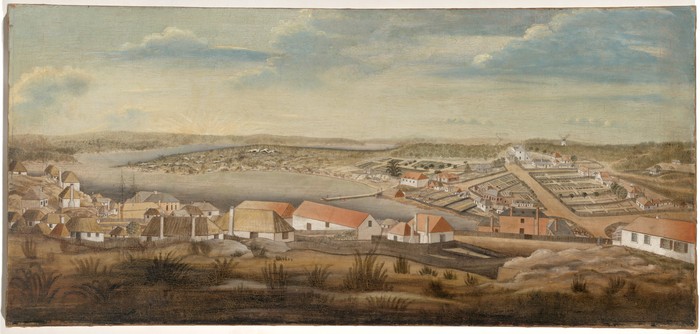
Sydney - Capital New South Wales
Founded by Governor Phillip – Named after Lord Sydney Secretary for the Colonies: 1788
c1799
Oil on canvas
Donated by Sir William Dixson, 1929
DG 56
c1799
Oil on canvas
Donated by Sir William Dixson, 1929
DG 56
This painting was probably painted in England, composed from drawings made in Sydney. It appears to show Sydney around 1799. By this time, Sydney was a small town of some 3000 people and its future was no longer questioned: the despair of the famine and drought of the early 1790s had given way to optimism about the colony’s potential.
The artist who made the original drawings for this painting is standing on the right, above the head of Sydney Cove, near what is now Grosvenor Street. First Government House, side on to the viewer and with a verandah, can be seen at the top of what is now Bridge Street. Government House is now the site of the Museum of Sydney.
The painting was purchased by Sir William Dixson in 1915 from the estate of a descendant of the first Viscount Sydney, after whom the settlement of Sydney was named.


 Back to list
Back to list